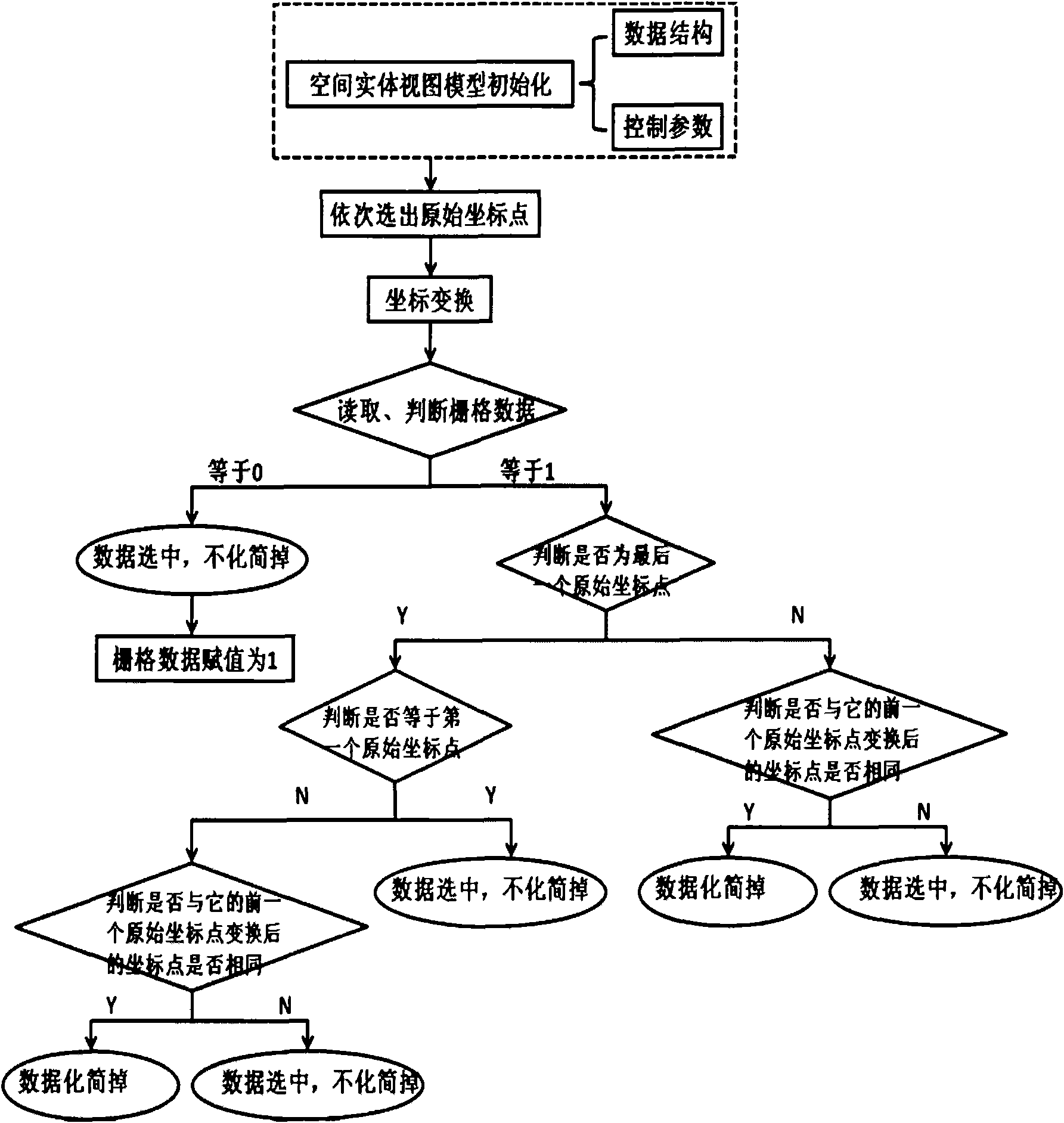Vectordata self-adaptation simplification method based on spatial entity view model
A vector data, self-adaptive technology, applied in special data processing applications, electrical digital data processing, instruments, etc., can solve the problems of large amount of calculation, no consideration of the spatial relationship of vector data, and the inability to simplify the lossless display, etc., to achieve spatial relationship Correct, improve transmission efficiency, improve the effect of display efficiency
- Summary
- Abstract
- Description
- Claims
- Application Information
AI Technical Summary
Problems solved by technology
Method used
Image
Examples
Embodiment Construction
[0034] The present invention is based on a spatial entity view model. Simply speaking, the spatial entity view model can simulate the actual view window environment, analyze and select the spatial data of the spatial entity in advance, and then only transmit the useful spatial data through the transmission medium to the actual view window. Its spatial entity view model includes at least:
[0035] 1) Data structure: raster data structure. In the model, raster data is used to represent a two-dimensional raster image, and the plane of the view window is divided into uniform grids. Each grid unit is called a pixel, and the raster data structure is a pixel. Array, each pixel in the raster is the most basic information storage unit in raster data, and its coordinate position can be determined by row number and column number. Since raster data is arranged according to certain rules, the positional relationship of entities represented is implicit in the row number and column number. E...
PUM
 Login to View More
Login to View More Abstract
Description
Claims
Application Information
 Login to View More
Login to View More - R&D
- Intellectual Property
- Life Sciences
- Materials
- Tech Scout
- Unparalleled Data Quality
- Higher Quality Content
- 60% Fewer Hallucinations
Browse by: Latest US Patents, China's latest patents, Technical Efficacy Thesaurus, Application Domain, Technology Topic, Popular Technical Reports.
© 2025 PatSnap. All rights reserved.Legal|Privacy policy|Modern Slavery Act Transparency Statement|Sitemap|About US| Contact US: help@patsnap.com


